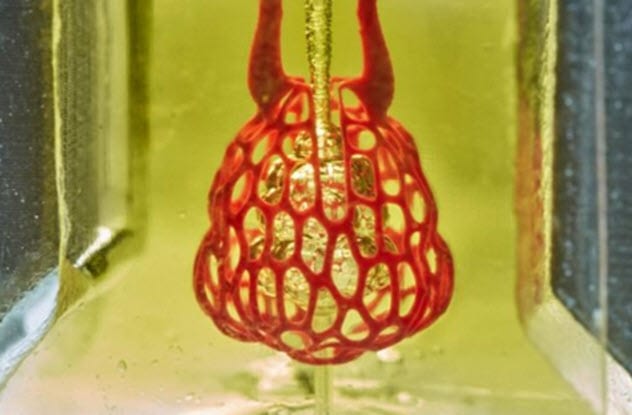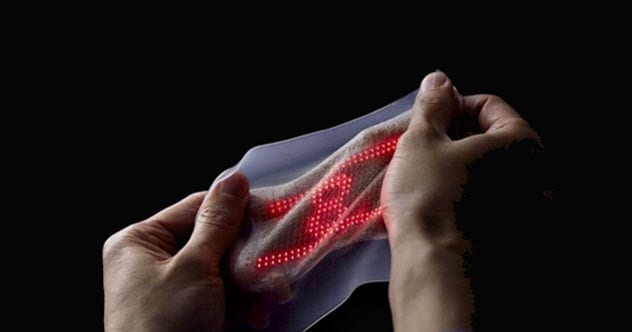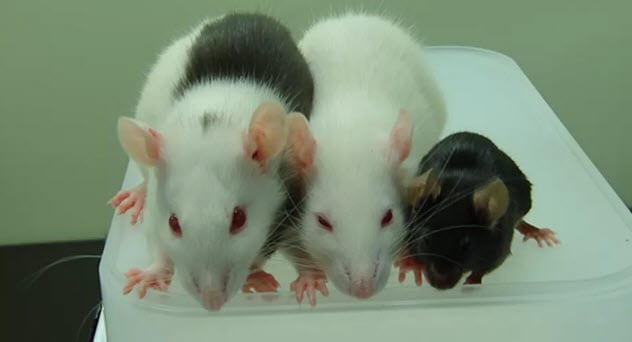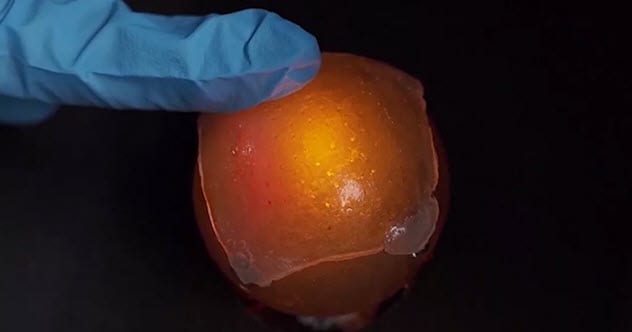 Crime
Crime  Crime
Crime  Technology
Technology 10 Hilariously Over-Engineered Solutions to Simple Problems
 Miscellaneous
Miscellaneous 10 Ironic News Stories Straight out of an Alanis Morissette Song
 Politics
Politics 10 Lesser-Known Far-Right Groups of the 21st Century
 History
History Ten Revealing Facts about Daily Domestic Life in the Old West
 Weird Stuff
Weird Stuff 10 Everyday Products Surprisingly Made by Inmates
 Movies and TV
Movies and TV 10 Actors Dragged out of Retirement for One Key Role
 Creepy
Creepy 10 Lesser-Known Shapeshifter Legends from Around the World
 Animals
Animals 10 Amazing Animal Tales from the Ancient World
 Gaming
Gaming 10 Game Characters Everyone Hated Playing
 Crime
Crime 10 Terrifying Serial Killers from Centuries Ago
 Technology
Technology 10 Hilariously Over-Engineered Solutions to Simple Problems
 Miscellaneous
Miscellaneous 10 Ironic News Stories Straight out of an Alanis Morissette Song
Who's Behind Listverse?

Jamie Frater
Head Editor
Jamie founded Listverse due to an insatiable desire to share fascinating, obscure, and bizarre facts. He has been a guest speaker on numerous national radio and television stations and is a five time published author.
More About Us Politics
Politics 10 Lesser-Known Far-Right Groups of the 21st Century
 History
History Ten Revealing Facts about Daily Domestic Life in the Old West
 Weird Stuff
Weird Stuff 10 Everyday Products Surprisingly Made by Inmates
 Movies and TV
Movies and TV 10 Actors Dragged out of Retirement for One Key Role
 Creepy
Creepy 10 Lesser-Known Shapeshifter Legends from Around the World
 Animals
Animals 10 Amazing Animal Tales from the Ancient World
 Gaming
Gaming 10 Game Characters Everyone Hated Playing
10 Futuristic Technologies Science Recently Brought To Reality
Every generation has its own idea of what “futuristic” means. Fifty years ago, that would have been flat-screen TVs, 24-hour ATMs, and other things we take for granted today.
As technological growth is exponential rather than linear, “futuristic” in 2019 means quite a bit more than it did back then. All bets are off at this point as scientific progress is rapidly leaving even our imaginations behind. Most of us didn’t even know that these 10 futuristic technologies were in development, let alone already in existence.
10 Thought-Controlled Prostheses
Humanity has a long history of going out and doing things that take our limbs away. Compared to our early days, prosthetic limbs have a come a long way. They’re not just pieces of wood vaguely shaped like an arm anymore. Today’s prostheses almost look and operate like real limbs.
However, anyone who has lost an arm will tell you that prostheses aren’t anything like the real thing. No matter how advanced they get, they still can’t communicate with the brain and neural network.
Of course, that was until science decided that it was time to build thought-controlled prostheses—and did. In an experiment funded by the Defense Advanced Research Projects Agency, a man from Florida became the first person to be fitted with an artificial limb that can be controlled by thoughts, blurring the line between imagination and reality.
Even if he still can’t do everything he could with his real arm—like splash water on it or drive—the arm largely works as intended.[1]
9 Full-Fledged 3-D–Printed Organs

3-D printers can print almost anything as long as the blueprint and material is available. From guns to musical instruments to clothes, people who’ve been experimenting with 3-D printing since the technology came out have done unbelievable things with it. Some of 3-D printing’s truly futuristic applications lie in medicine, like printing and replacing organs damaged during accidents.
Although we have previously discussed a San Diego research firm that successfully printed liver tissue, that was not exactly the same as 3-D printing organs because a human organ is much more than just tissue. Almost all our organs are so intricately designed that even our best machines haven’t been able to replicate them yet.
Until now. A researcher from Rice University recently printed a full-scale model of the lung—complete with air pathways and blood vessels mimicking the real thing.[2] We’ve also come one step closer to perfectly replicating human tissue. In another lab, scientists were able to reprogram the cells of our tissues into stem cells and make a bio ink out of it. The ink could then be used to print a complicated organ—such as the heart—exactly like the real thing.
Of course, this doesn’t mean that we’re now able to completely make a human body on our own, though these advancements are still something we never expected we’d be able to do so soon.
8 Working Retinal Implants

According to WHO estimates, around 1.3 billion people around the world are diagnosed with vision impairment. Many of them suffer from degenerative retinal diseases that cannot be cured. Completely curing blindness would certainly be considered a futuristic proposition, and thanks to groundbreaking research into retinal implants that perfectly mimic the human eye, we may already have the tech to do it.
Recently, scientists made a retinal implant that works exactly like the real thing and successfully tested it in rats. We’d like to note that eye implants already exist, though none of them could fix the damage done to the retina as it’s responsible for taking the information seen through the eye to the brain. This new tech can fix the eye and be used as a replacement for the retina and photoreceptor cells, something that wasn’t possible before.[3]
In other research, scientists have created a 2-D material that could be used to make an artificial retina. Combine that with the above implants, and we may already possess the tech required to eradicate blindness. However, it will be at least a few more years until it’s perfected and made affordable enough for the masses.
7 Digital Tattoos

You may have heard of the various types of LED screens that scientists are working on, including superthin, foldable screens that we may be able to carry in our pockets like handkerchiefs. But you may not have heard that the same thing could be done to skin. Based on recent developments, we already have the material to do that.
We’re not talking about replacing actual skin. No, these would be tattoo-like augmentations to the skin that would double as displays. If one Japanese research team is to be believed, we’ve already developed the material with which it would be made.[4]
It could be used for a lot of things, like monitoring heartbeats and other health readings while connected to an app on your smartphone, storing unlock codes for your various devices, or simply serving as over-the-top, bespoke tattoos for really fancy parties.
6 Grow Organs Of One Species In Another

One of the biggest problems with organ transplants is how choosy the human body is when accepting something it didn’t grow on its own. But there may be a way to get around that problem. In another organism, you grow the required organs that perfectly resemble those made by your own body and then transplant them.
If that sounds like something straight out of the distant future, we’re pleased to report that it isn’t anymore. In fact, scientists have already done it in mice. In a study published in Nature, researchers were able to grow pancreas cells for a mouse in rats. (And yes, they are completely different species.)
First, they injected rats with stem cells and did some other complicated science stuff. Then they transplanted the developed pancreas cells into mice with diabetes. To everyone’s surprise, the mice were cured and their sugar levels were kept down for one year. This technique could be used someday to grow whatever organs we need in other animals.[5]
5 3-D–Printed Nanobots

Nanobots have been imagined in popular fiction as well as the daydreams of budding scientists for quite some time now. In theory, we’d be able to build robots so small that they could enter the bloodstream and carry out minute operations inside the body, like manually killing cancer cells.
We’ve discussed some progress in that field before, though these devices weren’t technically tiny robots. Instead, they were folded DNA strands from another organism, even if they could be called nanobots for all intents and purposes.
More recently, scientists from Hong Kong developed 3-D–printed nanoscale robots with stem cells, nickel, and titanium and successfully used them to deliver cancer cells to a specific location in mice. Of course, the end goal should have been removing the cancer, but that wasn’t what they were testing. They wanted to see if the bots could deliver a payload to a precise location and used cancer cells because they are the easiest to track.[6]
4 Sending Taste Over The Internet
The Internet has transformed our lives. We can now see and hear what’s going on in different parts of the world by just clicking a few buttons on our smartphones. However, we can only send information that engages our senses of sight and hearing, and it’s still limited by the quality of the recording equipment and the skill of the person recording it. We have no way of sending, for example, what we smell through the Internet.
But we’re one step closer with taste. In a study conducted at the University of Singapore, researchers were able to successfully send a measure of sourness of a lemon drink to a glass of water in another location. They even had people test it out. Although most admitted that the virtual lemon taste was a bit less sour than the real thing, the participants were largely able to identify the taste.
Of course, this has only been tested on a lemon as of now and researchers cannot reproduce the real flavor without simulating olfaction. Still, it’s pretty unbelievable.[7]
3 Self-Healing Skin

Wear and tear is a major problem for every industry, whether it’s manufacturing, architecture, or medicine. Everyone has to accept that things are going to break down with time, and we have to take that into account when designing things. The problem is especially noticeable in the human body, which gets weaker and more prone to injuries as we age.
If some recent developments are to be believed, we’re not going to have that problem for long. Scientists at the National University of Singapore recently developed a self-healing material that mimics the skin of a jellyfish. The skin is able to repair itself within minutes of being cut or torn and can even withstand coming into contact with water.
While those with more perverse minds could see this as the next step to building realistic sex robots, it has quite a few other uses as well. It can be used to create realistic prostheses, which could be combined with the previously mentioned thought-controlled mechanism to build artificial limbs better than our real ones. This electronic skin is also sustainable because a material that can heal itself doesn’t need to be discarded as waste.[8]
2 3-D–Printed Food

In the machines vs. humans debate, it’s clear that we’re going to lose quite a few jobs to our metallic counterparts as time progresses. It’s not all misery, though. It’s just another part of the rapid technological progress of the last few decades, which has also helped us in many areas of life. However, we assume that some jobs will always be strictly human endeavors as machines would never be able to do them.
Cooking is definitely one of those jobs as there’s no way that a machine would have an idea of the right ingredients and proportions to make food taste good. However, machines have already proven they can do it as well as we can.
According to Natural Machines, a 3-D food printing company, we already have the technology required to 3-D print food items like burgers and pizzas. Foodini, as their machine is called, is capable of taking ingredients and turning them into dishes that taste as good as those made by people. The best part is that the company is now focusing on health food and fresh ingredients.[9]
Many other firms are now developing machines that give you the option to 3-D print food items at home.
1 Remote Touching
A big limitation of getting things done is being there to do them. We know it sounds like a philosophical and edgy argument as you obviously have to go places to do things there (like buying groceries). However, many researchers are hard at work trying to overcome that limitation, no matter how impossible it sounds.
Imagine a world where you could have sex with someone across the world like you were there or conduct a remote conference with a version of yourself that could replicate everything you do, including handling things from far away. The concept is so futuristic that we aren’t even able to wrap our heads around how it could be possible. However, a technology developed by researchers at MIT is already able to do just that to a large extent.
Known as inFORM, it’s a shape-shifting interface that can take input from a remote location and precisely replicate those actions in another. inFORM is only the name of the interface, though, as they’re now building quite a few other applications on top of it.[10]
Take Materiable, which is one of those applications that allows you to remotely handle objects and has even been successfully tested in the lab. It’s able to mimic the properties of a lot of materials found on Earth, like sand, water, and rubber.
Remote handling is only one of its applications as we don’t even know everything that it could be used for yet.
You can check out Himanshu’s stuff at Cracked and Screen Rant, get in touch with him for writing gigs, or just say hello to him on Twitter.
Read more fascinating facts about futuristic technologies on 10 Futuristic Technologies That Are Revolutionizing Our World and 10 Futuristic Technologies Of ‘Avatar’ That We Already Have.








